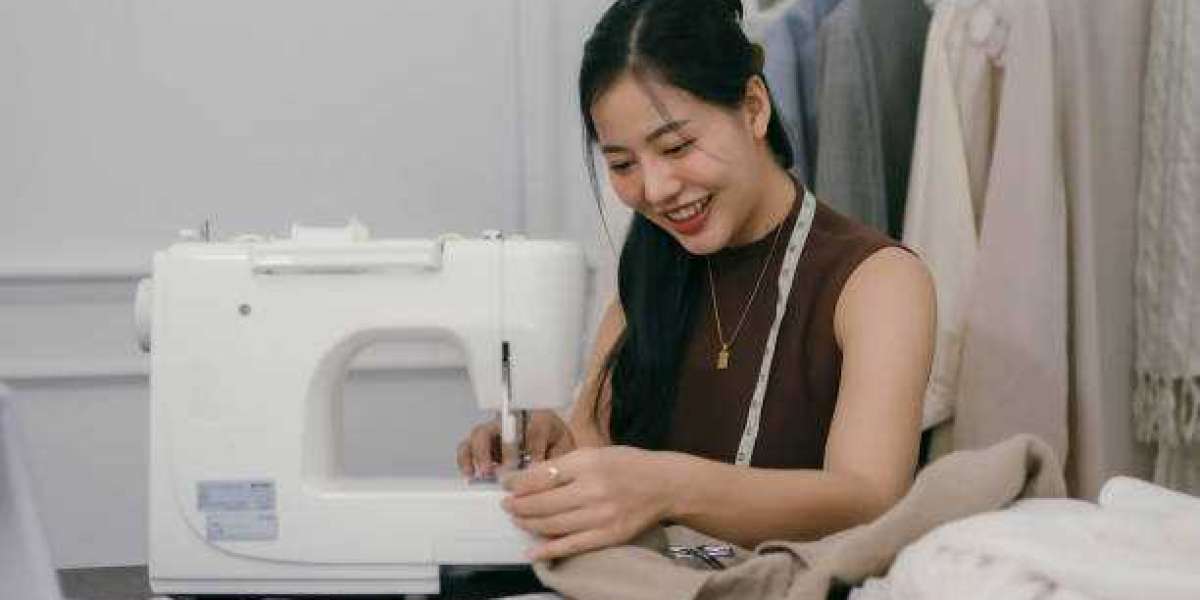Fashion is a dynamic space where trends shift with changing lifestyles, and one of the strongest contenders for timeless, versatile style is the knit dress. Soft, flexible, and flattering, knit dresses have earned their place in wardrobes across the globe. Whether it's a sleek midi for the office or a casual ribbed mini for weekend wear, the knit dress can easily transition between seasons and occasions. The people behind these garments the knit dress manufacturer play a pivotal role in shaping trends and delivering quality that meets consumer expectations.
With the rise of comfort-driven fashion and the integration of style and functionality, the knit dress has seen renewed popularity. Today’s consumers want pieces that are wearable, breathable, and elegant. This balance of fashion and comfort is what makes knit dresses unique, and it is up to manufacturers to interpret market demand into functional, stylish garments that resonate with diverse audiences.
Inside the Manufacturing Process
The journey of a knit dress begins with selecting the right yarn. A knowledgeable knit dress manufacturer works closely with designers and brands to understand the end-use of the product before suggesting yarns that align with the vision. Materials like cotton, wool, viscose, bamboo, and modal blends are often chosen based on the drape, softness, elasticity, and environmental impact. A lightweight yarn might be perfect for a spring dress, while a heavier wool blend is ideal for autumn collections.
Once the material is finalized, the knitting method comes into play. Circular knitting machines are widely used in dress production, as they allow for seamless construction that enhances comfort and appearance. These machines create tubular fabric that can be shaped into dresses with minimal stitching. Depending on the design, flatbed knitting machines may also be used to incorporate intricate stitch patterns, such as cable knits, ribbing, or jacquards.
Pattern creation is a critical phase in manufacturing. The technical team translates the designer’s sketch into a digital file that controls the knitting machinery. Adjustments are made to ensure the final product fits true to size, hangs well, and maintains its shape after wear and washing. A knit dress manufacturer must pay close attention to shrinkage allowances, stitch density, and elasticity to avoid flaws in the finished garment.
After knitting, the fabric panels are shaped, trimmed, and assembled. Assembly typically involves stitching together components like sleeves, collars, and hems using overlock or cover stitch machines. Seams are reinforced for durability, and any accessories such as zippers, buttons, or labels are added during this phase.
Before packaging, each dress undergoes finishing processes that include washing, steaming, and pressing. This step ensures the fabric texture is soft and the garment holds its intended silhouette. Finally, quality checks are performed to inspect for color consistency, stitch alignment, and size accuracy before the product is packed and shipped.
Advantages of Working with a Specialized Knit Dress Manufacturer
Choosing a knit dress manufacturer offers numerous advantages for fashion brands, especially those focused on creating high-quality, market-ready products. One key benefit is technical expertise. Because knitwear behaves differently than woven fabrics, manufacturers specializing in knits are more equipped to manage its unique properties. They understand how to work with stretch fabrics, maintain consistent tension during knitting, and prevent curling edges or misaligned stitches.
Another major advantage is access to advanced machinery. High-end knitting machines can produce garments with fewer seams, more precise fits, and smoother finishes. They also allow for creative features like ribbed contours, gradient dye effects, or mixed-texture panels that set a dress apart from competitors.
Customization is another strong suit of specialized manufacturers. Whether a brand wants a specific stitch pattern, garment length, sleeve style, or neck shape, a quality manufacturer offers flexibility in development. Many even provide prototyping services to test different ideas before full-scale production.
Working with a dedicated knit dress manufacturer also streamlines the production timeline. With end-to-end services from material sourcing to packaging, brands can move from concept to final product more efficiently. Some manufacturers offer white-label or private-label services, helping brands scale quickly without building an in-house production unit.
Knit Dresses in the Era of Sustainability
As sustainability becomes a central focus in fashion, knitwear is uniquely positioned to meet these new demands. A responsible knit dress manufacturer integrates environmentally conscious practices throughout the supply chain. This starts with sustainable yarns recycled cotton, TENCEL, organic wool, and biodegradable synthetics are all being used to reduce environmental impact.
Minimizing waste is another area where knitwear shines. With fully fashioned or seamless knitting, only the necessary yarn is used, which drastically reduces material waste compared to traditional cut-and-sew methods. Additionally, many manufacturers use dyeing processes that consume less water and employ non-toxic dyes, lowering their ecological footprint.
Ethical labor practices are equally important. Today’s consumers value transparency and expect brands to source from factories where workers are paid fair wages and work in safe conditions. A certified knit dress manufacturer ensures compliance with global standards such as SA8000, WRAP, or BSCI, which monitor workplace ethics.
Some manufacturers even embrace circular fashion by offering recycling programs, biodegradable packaging, and garments designed for disassembly. These initiatives not only benefit the environment but also strengthen brand reputation and customer loyalty.
Design Trends and Market Direction
Knit dresses have transcended seasonal wear to become a staple across multiple fashion categories from luxury to fast fashion, activewear to maternity lines. Current design trends reflect a mix of nostalgia and modern utility. Ribbed midi dresses with button fronts, open-back silhouettes, bodycon shapes, and oversized sweater dresses dominate current collections.
Color plays a big role in knitwear design. Earthy neutrals like beige, sage, and rust continue to trend, while bold colors such as cobalt blue and magenta are emerging as seasonal favorites. Manufacturers must be responsive to these shifts and capable of producing colorways that align with upcoming trends.
Texture and layering are also key elements. Multi-textured knits, pleated knit dresses, and blended yarns are being used to add depth and dimension to simple silhouettes. With the rise of smart casual dressing, consumers are seeking knit dresses that can transition from home to office to evening with a simple change of accessories.
Size inclusivity has gained importance in knit dress production as well. The elasticity of knit fabric makes it naturally adaptable, but manufacturers must still apply thoughtful grading and pattern adjustments to ensure flattering fits across sizes.
FAQs
What is the benefit of using knit fabric for dresses?
Knit fabric offers stretch, comfort, and breathability. It drapes well on the body and adapts to different shapes, making it ideal for dresses that require both form and function.
Can a knit dress manufacturer work with custom designs?
Yes, most manufacturers offer customization options including yarn choice, dress silhouette, stitch patterns, and finishing details to suit the brand’s identity.
How do I choose the right manufacturer for my brand?
Look for experience in knitwear, transparent production practices, material sourcing capabilities, and a willingness to collaborate through design and prototyping.
Is knitwear production more sustainable than woven fabric manufacturing?
Often, yes. Knitwear can reduce fabric waste, especially when seamless or fully fashioned techniques are used. It also supports the use of sustainable yarns and low-impact dyes.
Are minimum order quantities flexible for small brands?
Some manufacturers are open to working with smaller runs, particularly those that specialize in boutique or private-label production. It’s important to confirm this before starting a project.
Conclusion
The knit dress continues to captivate the fashion world with its adaptability, elegance, and ease. Creating the perfect knit dress requires not only design vision but also technical precision, sustainable practices, and market awareness. A skilled knit dress manufacturer brings all these elements together, offering fashion brands the support they need to succeed in an evolving industry. With quality manufacturing at its core, every knit dress becomes more than just apparel; it becomes an expression of comfort, confidence, and craft. This is why fashion innovators looking to elevate their collections often choose to work with knitika for their knitwear needs.
Author Bio:
Jasmine L. Carter is a knitwear production consultant with years of experience guiding fashion labels through design, sourcing, and manufacturing. She collaborates with knitika to bring high-quality, sustainable knitwear to life. Visit their website to discover how they can support your fashion journey.

